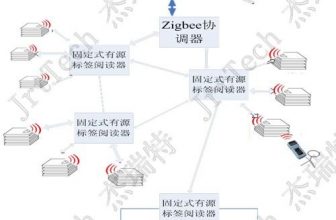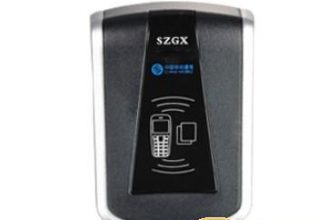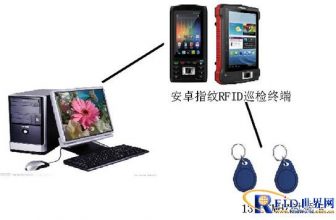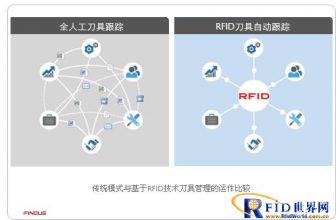
RFID asset real-time positioning and monitoring solution
[ad_1]
1 Introduction
The RFID asset real-time positioning and monitoring system of Shanghai Net Frequency Electronic Technology Co., Ltd. can use radio frequency identification technology (RFID) to mark fixed assets according to the scope of fixed asset management and the size of the management target. The main feature of the system is the full tracking of fixed assets through radio frequency technology.
2 Project requirements and plans
2.1 Project background
Today’s enterprises, whether small-scale commercial enterprises or large-scale manufacturing enterprises, all put fixed asset management into an important position in internal cost control and annual financial statistical reports. The cost of internal fixed assets also affects the profitability of the company’s external direct income. Good control and mastery of internal assets can provide strong support for stable operations. The asset management system includes modules for daily asset management, asset depreciation management, report statistics, asset purchase approval management, asset inventory management, key asset management, and system management. It provides management functions such as asset increase, decrease, transfer, lease, decommissioning, storage, idleness, scrapping, and allocation, and provides all kinds of reports required, and provides flexible and diverse statistics and queries.
2.2 Demand analysis
Asset tracking management based on active RFID technology is mainly used for the management of asset equipment information management objects and application objects (that is, people who contact, use, and keep asset equipment information).
Mark important information objects with RFID tags to make them a target, and store the target data in the database (database) to make them identifiable targets, and deploy target identification and data collection equipment-RFID in different management units and monitoring pointsReader, Read the target data that enters the reader’s signal coverage area (data acquisition platform); transmit the data to the management server through a wired or wireless network (data transmission platform), and analyze and judge the data through various configured modules , Release (service platform); respond to the target behavior according to the module configuration. Realize the safe and effective management of important information carriers, involved personnel, and related behaviors.
The asset identification and tracking system will essentially change the previous management mode. Based on the “process management” of important information, it not only includes the management of the object itself, but more importantly, it can generate, move, track, and track important information. The operation process of a series of events such as storage and inspection is tracked and managed. Management events are always accompanied by the development process of things. They are recorded, analyzed, and summarized, evaluated, judged, and issued early warnings and alarms according to pre-established rules. It can manage matters more humanely and get rid of the interference of human factors at the same time, embodying “humanities, science and technology, humanities management”.

2.3 Application scheme
We use active electronic tags to correspond to each asset, and adopt a special model to keep the electronic tags and assets from being easily separated. Managers can quickly store, retrieve, and locate target items through the system, and can also monitor asset locations in designated areas in real time.
This system consists of three parts: front-end data acquisition equipment (active tag + reader), front-end management system and back-end management system. The following is a simple function description of this system:
The asset tag is fixed on the asset and serves as the only identity document for the asset; the reader can be deployed at doorways, passages, storage rooms, and other places that require special attention. Two modes can be used to monitor the movement of assets: one is continuous monitoring. For example, in the storage room, the reader will continue to collect the signal of the tag. If the tag cannot be read within a period of time, an alarm signal will be triggered; the other One is at the door or passage. If the reader collects an asset movement signal that has not been filed beforehand, an alarm signal will be triggered. The reader can process the signal collection of 200 tags at the same time, and the signals sent by the tags can be read when the assets are moving, and the system tracks and locates the assets in real time. In addition, assets do not move by themselves, so when assets move, someone must carry them in and out. When a person carries a supervised asset through the exit, the exit RFID reader will read the ID numbers of both the person and the asset, and query the server to find that the asset belongs to the scope of supervision and has not been authorized to leave. The antenna at the entrance will automatically send out sound and light alarms; the server sends the personnel and asset information represented by the two ID numbers to the asset management department and the security control room, and displays the monitoring point from which it flows. Make the relevant supervisory personnel arrive at the monitoring point where the alarm occurs as soon as possible, and carry out further processing.
2.4 Program features
1) Long distance: The reading distance is up to 80 meters, and can be adjusted according to actual needs.
2) Stable operation: The active card has a stable reading distance and is not easily affected by the surrounding environment. Moreover, the active card can effectively break through the shielding effect of the automobile’s explosion-proof metal mesh, and smoothly exchange data with the reader.
3) Support high-speed mobile reading, and the moving speed of the identification card can reach 100 km/h.
4) High reliability, it can operate normally within the ambient temperature of -30℃-85℃, especially in the low temperature in the north and high temperature in the south, it has more advantages, and it can effectively resist dust and pollutants in the air.
5) High anti-interference: There are no special requirements for various interference sources on site, and the installation is convenient and simple.
6) There is no need to apply for and pay for the ISM microwave frequency band that is open worldwide.
7) Ultra-low power consumption: long service life, low average cost, safer and healthier for the human body, and no radiation damage.
3 Scheme design
3.1 Design concept
The design of the entire system scheme runs through the following principles:
When designing the entire system, the starting point is advanced technology, reasonable architecture, mainstream products, low cost, and low maintenance.
Advancement of technology: The selection of the entire system and the configuration of software and hardware equipment should conform to the trend of high and new technology, and adopt the latest Wi-Fi RTLS technology in the world.
Reasonable structure: Adopt advanced and mature technology to structure each sub-system, which can make it run safely and stably, effectively eliminate the bottleneck that may be generated by each system, and ensure that each sub-system has good scalability through appropriate equipment. Stability and safety are our most concerned issues. Only a stable and reliable system can ensure the normal operation of all equipment.
Stability: The system is based on a stable, safe, and confidential large-scale database to ensure the normal operation of the system. It has a complete management system such as good data sharing, real-time fault repair, and real-time backup.
Security: The system adopts and supports digital encryption technology and has high security.
Product mainstream: When selecting equipment, it is mainly based on the actual situation of the positioning environment and various products on the market to select products with the best performance-to-price ratio and expansion capabilities.
Low cost and low maintenance: The products used should be simple, easy to operate, and easy to maintain. The easy operation and easy maintenance of the system are the conditions to ensure that non-computer professionals can use a system well. Our solution integrates the existing rich network design and construction experience, as well as powerful products in the field of integrated transmission of digital images, voice and data. Advantages to achieve the required design requirements.
Compatibility: All systems are relatively open systems. Different products have standard interfaces and provide multiple communication standard protocols, which can facilitate the access of third-party equipment.
Modularization: the establishment of various sub-systems up to the overall system strictly implement the modular structure to meet the needs of system function expansion, replacement and maintenance of operating equipment, and ensure the efficient and reliable operation of the system.
Scalability: Using object-oriented and modular development technology, software and hardware modules with other functions can be expanded at any time as needed, with good scalability.
Centralized management: remote field equipment, each sub-system is centralized in the center for unified control, implementing the control and setting of all remote equipment to ensure that the system performs its management functions efficiently, orderly, and reliably.
Upgrade maintenance: The system takes into account the actual needs of the future system for increasing and modifying the capacity and functions. The positioning system can upgrade the software, and the operation is simple. The operation should be completed by the system administrator without complicated operations and special Technology.
3.2 System characteristics
1) Powerful and practical functions: The fixed asset management system includes asset addition, change, scrapping, damage, depreciation, lending, return, distribution and use of departments, use of department changes, management staff settings, asset exchange between departments, various reports Printing, combination query, etc. For each fixed asset, you can check out all the information of the asset from the purchase, entry, put into use, use department, depreciation, and even withdrawal from use, which can be recorded in detail. The dynamic query function can ensure that managers have comprehensive information at the first time, and the batch depreciation of assets can reduce a large amount of repetitive labor and ensure the accuracy of data. Automatic report preparation and printing are fast and accurate, which can save a lot of time for manual preparation of reports. The fixed asset management system centralizes the previously scattered management information and combines them into a management platform with overall functions.
2) Advanced radio frequency card management method: After each piece of newly purchased asset related data is input into the computer, the information will be written into the radio frequency card according to the corresponding software. The content of the radio frequency card can be set by the user, including the name of the fixed asset, Date of purchase, storage (department of use), etc. Attaching the radio frequency card to the physical objects of fixed assets not only clearly distinguishes the use sectors of fixed assets, but also brings great convenience to the inventory. The radio frequency counting machine reads the radio frequency card on the fixed assets, and the information in the card is automatically stored in the radio frequency counting machine. The radio frequency counting machine is similar to the one used in supermarkets, but there is a great difference. This kind of radio frequency counting machine is battery-powered and does not need to be connected by wires. The information is stored in the radio frequency counting machine. The inventory machine can store nearly 20,000 fixed asset codes, which increases the inventory speed by more than 90%, and at the same time avoids repeated inventory or wrong inventory. After reading the radio frequency card information, connect the radio frequency counting machine to the computer through the computer to quickly obtain the actual situation of the assets, and through the combination query, you can immediately find the changes in the profit and loss of the assets.
3) Efficient data transmission: The fixed asset management system can not only inquire about the situation of fixed assets on this machine, but also realize two-way transmission through the intranet and the Internet, so that various information and data can be transmitted by others at the same time. User sharing. 4) Unique authority management: In the fixed asset management system, the different responsibilities of each operator are fully considered, and the corresponding operation authority is formulated for each operator. The user’s identity and password are identified to ensure that different operators only Able to perform limited operations within the scope of their duties. This not only ensures the stability of the system, but also has a certain degree of flexibility to strengthen adaptability.
5) Friendly user interface, easy to learn: adopts the style of the Windows interface and is convenient for users to use, and implements a large number of the style of the directory tree in Windows, so that users can clearly understand the relationship between the department and the subordinates, asset categories and content. . A large number of function prompts enable users to smoothly complete corresponding tasks step by step as required, and reasonable menu layout enables users to easily find out what they want to perform. A large amount of comprehensive data appears in the form of reports and graphs, which can make it easier for users to understand and accept. Those engaged in fixed asset management only need to master basic computer use knowledge and carefully read the operating instructions to master the general operation of the system in a short period of time.
3.3 Function description
The main features of the system are as follows:
3.3.1 Real-time monitoring
1) Device location information: The location information of the device in each grid can be displayed through the electronic map or list, and searchable.
2) Tracking designated equipment:
The map automatically switches with the movement of the label. Move the mouse to the label to see the current status of the label
3) Equipment alarm status information: Display the alarm status of the equipment through different colors and shapes on the electronic map
3.3.2 Alarm function
1) Area alarm
a. Cross-border alarm: Some areas can be set to be restricted areas. When the device is placed in this area, an alarm message will be issued when an unauthorized tag enters;
b. Alarm for non-conformity with the management information system: The placement position of the equipment can be set in advance. Once the placement position does not match the setting, an alarm message will be issued in time.
2) Disappearance alarm: There are many factors for the disappearance of the label (such as the battery is dead or destroyed, the label crosses the signal coverage area, etc.), you can set the disappearance alarm condition and alarm level of the specified label. If the label disappears, it will trigger the corresponding The alarm;
3) Low battery alarm: You can set the minimum power limit in the system, and once the label power is below this limit, an alarm message will be issued;
3.3.3 History query
1) Query location history: the location change records of any assets and personnel
2) Query the alarm history record:
3) Query operation history: related operations on assets and personnel
3.3.4 Electronic map
1) Map list: add, view and modify map information;
2) Map zoom: The map can be zoomed in and out, adjusted to a suitable size;
3) Map switching: The map will automatically switch when tracking a single label, or you can manually switch the map to view all label activities on a map;
4) Map area management: area division and management on the map;
5) Setting the position of the reader on the map-set the position of the reader on the map;
6) Position point setting: Set the positioning point to be positioned.
3.3.5 Management function
1) Daily asset management functions: Mainly include daily work such as adding, modifying, exiting, transferring, deleting, and splitting fixed assets to calculate depreciation rate and residual value rate.
2) Asset depreciation: including the provision of monthly depreciation of fixed assets and printing of monthly depreciation reports.
3) Monthly fixed assets report: Query classified statistical monthly (annual) reports according to conditions such as unit, department, time, etc., monthly increase in fixed assets this month, monthly decrease in fixed assets this month, monthly fixed asset depreciation reports (annual reports), and Provide printing function.
4) Comprehensive query of fixed assets: You can query the status of a single or a batch of fixed assets. The query conditions include asset cards, custody status, effective asset information, departmental asset statistics, exit assets, transferred assets, historical assets, name specifications, and Start and end date, unit or department.
5) Inventory function: check the data in the radio frequency inventory machine with the data in the database, and process normal or abnormal data to obtain the actual situation of fixed assets, and generate inventory profit schedules by units and departments , Inventory loss schedule, inventory summary table.
6) System maintenance function: the system administrator will perform the asset classification code table, exit method code table, purchase method code table, storage place code table, department code table, custodian table, and unit name table. Perform operations such as adding, modifying, deleting, etc.; provide the function of the operator to modify his own password; the system administrator can freely set the operation authority of each subordinate operator to the function.
7) Security management function: provide various security management methods;
Password management function: maintain account numbers and passwords;
8) Authority control function: divide users into different levels to determine the user’s authority to use the system, and determine different operations according to different authority.
3.3.6 Statistical Report
1) Label warning records-view all labels or all warning records of designated labels;
2) View the label report-view the important alarms of the label, the statistics of the number of times of entering and exiting the area and the stay time;
3) Operation history-view the user’s operation history;
4) Count the number of executions of various tasks, the work situation and idle time of a single person, and the peak work period of each position every day;
5) Perform statistical analysis on the time and area of each alarm event;
6) Analyze the status of the label to provide a list and location of idle police forces for the reference of the leaders to use the police, and the analysis indicators are set by the user;
7) According to user-defined rules, the number of police patrols, time periods and intervals are counted by time period.
3.4 System integration
The asset and personnel management and positioning system needs to be combined with the existing information management system, involving the integration of software docking and secondary development. This work will be negotiated separately.
3.5 Extended functions of network frequency RFID real-time positioning management system
The network frequency RFID real-time positioning management system can be applied to many industries, such as logistics, prisons, security, hospitals, coal mines, tunnels, factories, etc. Among them, factory applications can not only locate mobile assets, but also factory employees Positioning, for example, dynamic attendance can be realized, and the location status of employees can be grasped at any time the day after tomorrow; the factory security personnel can be positioned and managed to determine whether the security guards patrol according to the specified time and path; external vehicles and visitors can be managed and tracked The walking route of the visitor, once the visitor enters the restricted area in the factory, the police will immediately call the police and so on.
4 Plan implementation
Regarding the implementation of the specific scheme, it is necessary to refer to the customer’s design requirements, and request the customer to provide detailed floor plans and system design requirements.
4.1 Implementation plan design
4.2 Network deployment plan
4.3 System deployment
, 4.3.1 Hardware equipment
RFID reader, positioning tag
4.3.2 System hardware
1) Server: application server, database server, backup server.
2) Ethernet, CAN or 485 bus switch
3) Terminal display
4.3.3 Construction accessories
1) Centralized power supply
2) Cat 5e cable, DC power cord, PVC pipe or slot
4.3.4 Software environment:
Operating system: Windows Server 2008 Windows Server 2003Window VistaWindows XP
Component: Microsoft .NET Framework 3.5
Database: Microsoft SQL Server 2005
IIS: Microsoft Internet Information Server 6.0
5 Market application
1) Automatic management of personnel entry and exit
2) Prison inmate management
3) “Home-School Link” management for students entering and leaving campus
4) Positioning, tracking and identifying management of underground personnel in coal mines
5) Management of hospital personnel and equipment
6) Supervision and identification management of warehouse materials entry and exit
7) Container and yard management
8) Fixed-point identification and control management of production processes
9) Intelligent parking lot management, high-speed non-stop charging management
[ad_2]






